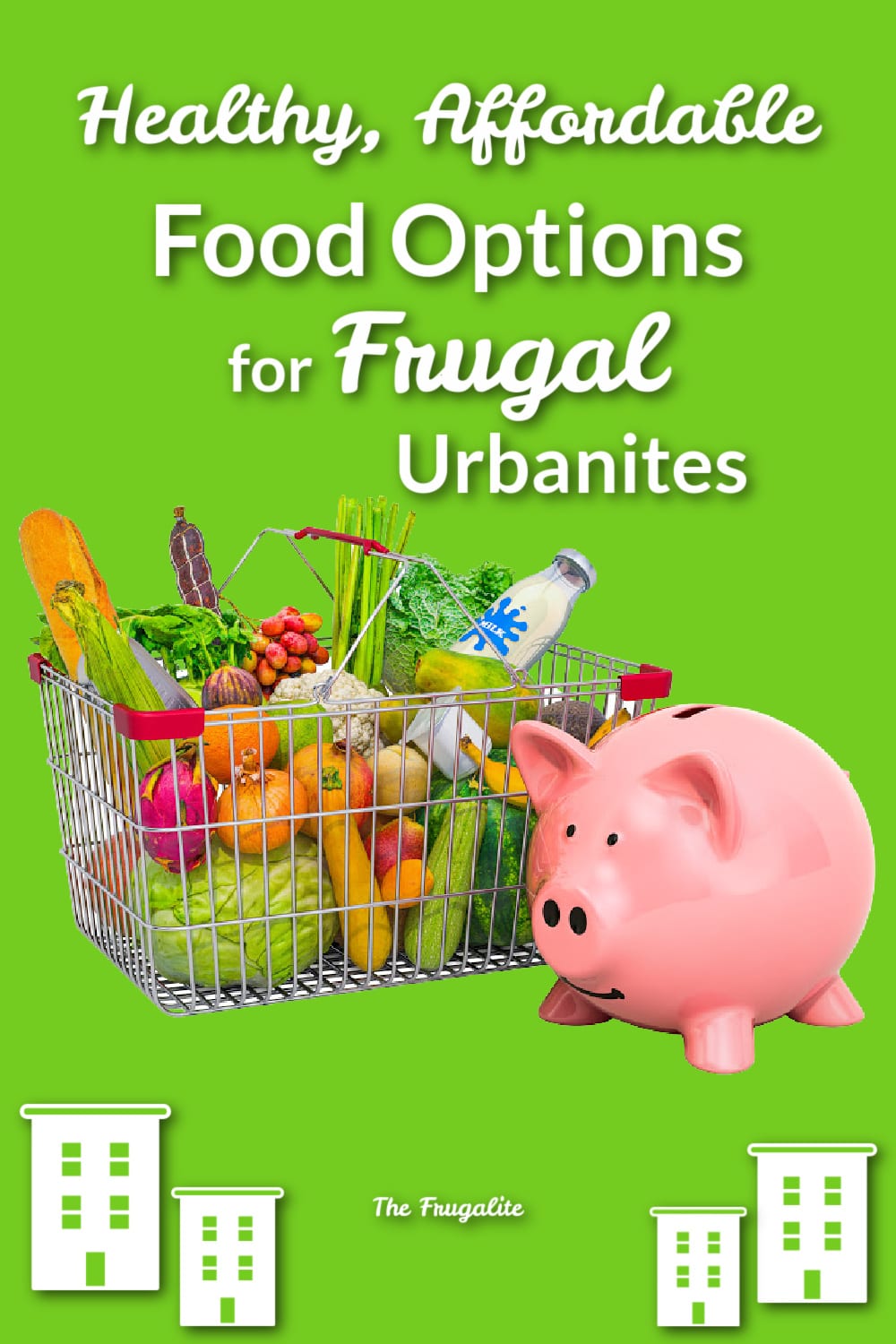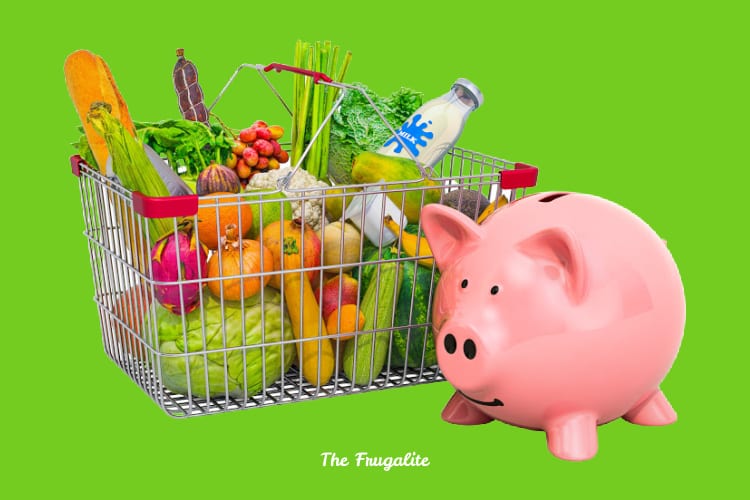(Psst: The FTC wants me to remind you that this website contains affiliate links. That means if you make a purchase from a link you click on, I might receive a small commission. This does not increase the price you’ll pay for that item nor does it decrease the awesomeness of the item. ~ Daisy)
Sourcing healthy, affordable food options in an urban environment could be as simple as growing an Urban Vegetable Garden. However, if you live in an apartment or condo and don’t have a yard, growing food can be challenging. (Not impossible though!) No worries! Here are several options for you to source good, healthy food locally!
Grow your own healthy, affordable food
Many counties have community gardens programs. The county rents out garden plots of various sizes at a meager cost for the season. My local community gardens rent plots for $10-$25 for the entire season! A simple online search using something like: (your county) community gardens will lead you in the right direction. For example, the keywords “San Diego community gardens” brings up this site: http://sdcgn.org/
In addition to growing your food, you’ll meet like-minded neighbors, possibly from different cultures and walks of life. Community gardens build community in this way. Who doesn’t love to share gardening tips and show off good produce? You’ll get some exercise, along with sunshine and fresh air. And you’ll be one step closer to self-reliance in a very sustainable way.
Daisy touts the benefits of becoming a producer and growing your own food in this article.
Community supported agriculture
A CSA is an agreement to purchase a share of the farmer’s crop to be delivered at specific intervals. Share sizes & prices vary, and you’ll usually have to pay upfront. But, the money goes directly to the farmer. Some deliver, and others will bring the boxes to a communal area for pickup. Here is one example of a CSA: Local Harvest
One con of a CSA is the boxes contain what the farmer has. You do not get to pick and choose. However, I discover some yummy healthy, affordable food options. Fortunately, I find stuff I dislike to be at a minimum. My local food bank appreciates my extras, which gives me a good feeling in my heart.
Farmer’s Markets
Another place for healthy, affordable food options is your local Farmer’s Market. Here you can pick & choose your fare. And, the money goes directly to the grower. Farmer’s Markets present opportunities to buy extra and preserve for later! (If you are new to preserving, get yourself a copy of Daisy’s book: The Prepper’s Canning Guide.)
While I don’t find the food much cheaper than it is at the store, I do like knowing how my food is grown. Getting to know the sellers is helpful here; some local farmers ship products from other states. Since food’s nutritional value is highest in inverse proportion to how long it’s been traveling, local is best.
Porch/lanai growing
Many units have access to a small porch or lanai. You could easily place a few containers there. It’s possible to grow some greens and herbs. You could even produce a dwarf tomato or other vining things. But be aware: weight adds up. Be sure the lanais can withstand the weight. I’ve found these spaces to be small, and a bit dark, so plan your plantings with this in mind.
Also, be sure to check with the management/condo association. They likely have some rules in place regarding what can be put on the lanai, especially if it’s visible from the street. If you’re considering a home aquaponics system, you might consider renter’s insurance. Tank leaks can be a bit problematic, including for your downstairs neighbor.
Grocery stores
If none of the above options are available, you can buy fresh at the grocery store when it’s in season and preserve your own. Buying in season will be a bit cheaper, so buy as much as you can. Buy those blueberries and strawberries during the summer. Then, freeze or dehydrate them, and enjoy them throughout the year!
Preserve food with a little extra effort and equipment
Regardless of where you get it, preserving that fresh food for use over the winter is a huge benefit. I purchase a single weekly CSA share every year, preserve the extra, and eat that over the winter. I also preserve my garden goodies, and I haven’t purchased vegetables from the store in over six years.
Preserving your food isn’t that difficult, although it does take some work and a good recipe book. I use the Ball Blue Book of Preserving. Some equipment is involved. Invest in a canner with its associated implements or a good dehydrator. At the very least, you’ll need appropriate pans and freezer bags.
Also, if you’re going to preserve food, you’ll need a storage place. An extra freezer, some shelf space, and containers specific to your preservation method are required. You can reuse many containers. So to me, they’re an investment. The Prepper’s Pantry offers great suggestions for where and how to store food, and much more.
Healthier food leads to a healthier you
I stopped eating most processed foods in 2012, as I got better at growing and preserving my own. These days I can’t stand the taste of processed foods. Most of which is sugar and carbohydrate with no actual nutrition involved. I’ve formed the opinion that many of our chronic health problems come from the food we eat. And, I’m not the only person in the world of nutrition who holds this opinion.
Anecdotally, I’m allergic to cats and used to take 50 mg of diphenhydramine daily for one cat. I have three cats and now take the same dosage 1-2x per week tops. To me, that suggests a better immune system, which I believe stems from sourcing and eating healthy food options. By making this investment in the supplies necessary for preserving my food and sourcing it locally, I’ve improved my health, both now and in the long term. That, to me, is well worth the investment.
Disclaimer: I emphasize that I can’t prove the above scientifically.
You can do this!
I encourage you to find a way to add healthy food options to your life! Leave that unhealthy, non-nutritious, processed food behind. Your body, your taste buds, and your wallet will all thank you.
Do you have any tips or suggestions to offer other readers? Perhaps you have found a way to become a producer in a time of consumers! Have you ever tried a CSA? What about your local Farmer’s Market? Let’s talk about it in the comments below.
About Jayne
Jayne Rising is a gardener and bookworm with a BS from the University of Wisconsin and a Master Gardener certification. She’s been growing food on her small urban lot since 2010 and teaching others how to do it since 2015. She’s involved in a number of local urban agriculture initiatives, working to bring a sustainable and healthy food system back into the mainstream.












4 thoughts on “Healthy, Affordable Food Options for Urban Frugalites”
Reno has had CSAs and private community gardens in the past. There was one near me for a long time, but it has not been in production since the virus got here.
I helped (major contributor, actually) with a small garden in the courtyard of the apartment building several years ago. It did quite well, though I got very little food from it, as many non-participants, raided it every night after produce began to show up.
In addition, of those that were ‘active participants’ there were only a tiny handful that actually were at all active or participants in anything except giving hard and fast ‘suggestions’ more in the form of orders, without doing anything themselves or helping with the expenses of soil supplements and container costs.
Also, because a couple of the people that did try to help were totally clueless and could not seem to understand the concept that water flows downhill, caused some leaks (the courtyard was over the street-level garage) and the management of the place would not let us do another garden. I missed it for a couple of years, but it got to where I could not have been of any help anyway.
However, it just goes to show you that there are some places you might not expect that will have some garden space you might not realize initially. And do remember the trials and tribulations that can come with a cooperative effort garden, especially one with access to others not in the group.
I do have to say, the yellow crookneck summer squash I insisted on growing that I managed to get before it all disappeared, was most excellent!
Just my opinion.
Local CSA here is very expensive, difficult to get to and does not offer anything particularly great – it is organic but all it offers can be found in the locale groceries and health food stores and at better prices.
The farmer’s market here is really a joke. The main seller simply buys his produce at a wholesaler about 50 miles away. There are a few, less than 10, sellers who do grow their own. The next major town north has rules for what can be sold at their Farmer’s Market – must grow it yourself, be within 50 miles of the town, etc.
I’ll stick to growing as much as I can and carefully buying at the store.
Some miscellaneous thoughts:
Jayne Rising:
“…Since food’s nutritional value is highest in inverse proportion to how long it’s been traveling, local is best.”
There is a “well, it depends” issue here. Some foods travel really well while others don’t. You get to learn the difference. There are also other issues that affect available nutrition. Tammy Gangloff of dehydrate2store.com says that dehydration preserves around 90% of a food’s nutrition in contrast to canning which preserves roughly 50%. But there are a few foods that don’t dehydrate well, so canning or pickling may be a next best choice.
Then there are other things that can deprive you of that nutrition in stored foods: light, heat, oxygen leaks, predators (both animal or human), a long term power outage for frozen foods, or poor food preservation mistakes (newbie gotchas) can all add to the some-foods nutrition loss from traveling.
Regarding aquaponics, it is dependent on reliable electric power. In a power outage of more than just a few hours, the aeration pumps that stop working will kill your fish. Do you have (or can afford) a back-up power system that can handle a few days or weeks or months of a power outage? The restart-up time or weeks or months to acquire replacement fish and get your food system working again is something you need to research and then decide whether that’s a risk you want to take, and possibly whether a permaculture system that doesn’t require electric power might be a more reliable long term strategy. And … some gardening systems are somewhat portable and some are not. If a bug-out plan is part of your toolbag of strategies, whether you can take some portion of your gardening system with you is an issue to consider.
–Lewis
For those living in the right areas (I live in the desert Southwest of the US) there is a fine organization known variously as Produce on Wheels Without Waste, or Borderlands. They are a non-profit produce rescue organization. For $12 you can get up to 70 pounds of fruit and vegetables that are usually in pretty decent condition that would otherwise have gone to waste. Sometimes it’s reaching end of freshness so you need to can it right away but other times you get some pretty interesting stuff. It’s definitely a source of cheap and wholesome food, and a lot of it is organic.